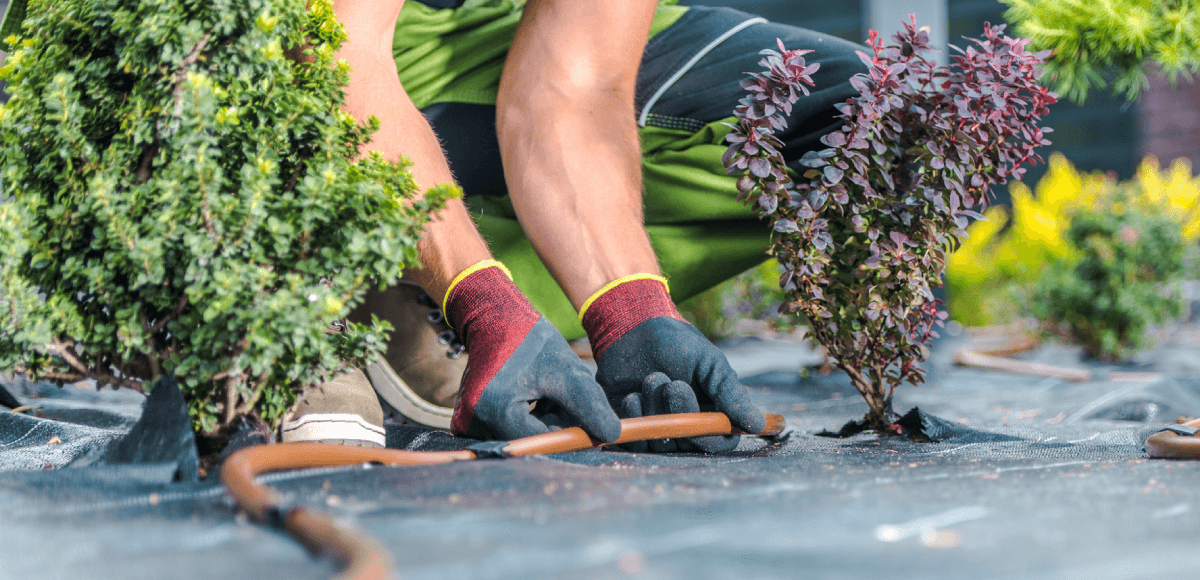
The Ultimate Guide to Spring and Summer New Home Maintenance
Mornings are brighter, temps are climbing, and our houses are opening up. As spring blooms across the Pacific Northwest, it’s time to start thinking about your new home maintenance! From inspecting for cracks and damage to tuning up systems, the warmer months are the perfect time to give your property the refresh it needs. This is your complete guide to caring for your Pahlisch home and yard in the spring and summer.

Spring Maintenance Checklist
Inspect the Roof
With snow flurries and icy temps, winter is not ideal for roof inspections. Now that it’s nice out, take some time to look for missing, sagging, or cracked shingles. They’re not just an eyesore; they could be letting in the elements—or worse. Rain, snow, debris, and pests can all invade through cracks and holes, posing a bigger problem the longer they persist. If any damaged shingles are present, replace or repair them. Use safety precautions if tackling yourself, or call a licensed service person to perform the job. While you’re at it, clear the roof of all debris to boost the appearance of your exterior and reduce the chance of future roof damage.
If you live in the rainier parts of the Pacific Northwest, you’re no stranger to moss. When on roofs, these plants can damage shingles and cause them to lift, curl, or blow off in high winds. You can prevent moss by applying a solution of equal parts bleach and water. Allow the mixture to sit for 15 minutes, then rinse it off. One note: pressure washing or scrubbing your shingles can cause further damage, so this is one project where good old elbow grease does the trick.
For the drier, desert climates, our homeowners tackle endless pine needles, sagebrush, and tumbleweeds instead of moss. To prevent fire damage, keep your roof clear by using a soft broom, cleaning brush, or leaf blower.
Gutters & Downspouts
The rainy season keeps gutters and downspouts busy for months on end. Leaves, seeds, branches, needles, and organic matter of all strains and sizes collect and build up. You’ve probably even seen weeds sprout up out of them on occasion.
While you can get ahead of the cleaning during late fall and early winter, spring is the time for a full reset. Clear gutters and downspouts of all impediments, and then watch to ensure water is free-flowing, not overflowing. The latter can flood interiors and damage exteriors when left unchecked.
Check Hardscaped Material
While you’re outside checking the roof and gutters, do a perimeter check that includes concrete, asphalt, and other hardscape materials. Extreme temperature swings can cause cracks and damage to driveways and sidewalks, so make note of any issues and contact your community management company for issues in shared spaces (like sidewalks).
Double-Check Doors & Windows
Caulking along windows and doors gives them a crisp, finished look and keeps leaks and drafts at bay. However, changing seasons and turbulent temperatures can cause caulking and trim to dry out, split, and crack. Check to make sure yours are intact and in place by doing a once-over of all doors and windows. One big benefit to keeping all caulking and trim in good working order is keeping out pesky bugs and other pests. If you need to re-caulk, this simple DIY task is best done during dry weather.
Next, now that windows and doors will be propped open, left ajar, and used more frequently to access the outside, check for smooth movement, free from hitches or damage. Lubricate squeaks and sticking points with silicone spray, wash window screens, and check for rips. Every well-fitting, properly functioning part assists with energy efficiency, heating, and cooling.
Air It Out
Crawl spaces under homes need adequate airflow to ease humidity and keep air quality at optimal levels. Foundation vents are the answer. Open them during warmer months to promote circulation, and close them during colder months to fend off frozen pipes. For spring and summer, store away the foam blocks used to further seal off foundation vents—just remember where you put them! Come fall, you’ll want to put them back into position.
Tune-up the Sprinkler System
Performing sprinkler system fixes is essential to new home maintenance! First, check all valves in the green underground boxes, where leaks are easiest to spot. Next, survey the lawn for pooling water, where a faulty connection or split line may be the culprit. Last, replace damaged sprinkler heads or refit them with those that shoot farther, wider, or more directly if your landscaping or plantings have changed. Repair all leaks or call in the pros before using the system regularly. Unfortunately, putting pressure on a damaged system will likely lead to more equipment failures and mounting costs. When running properly, set your watering schedule to mornings and late evenings to maximize absorption.
Look for Leaks
To catch drips before they do damage and ward off serious water-related problems, check all exterior spouts, including spigots, faucets, and hose bibbs (also known as hose valves), for leaks. Inspect the hose carefully, especially if attachments were connected to the hose bib during winter. Undetected issues could cause major damage inside your home when the hose bibb is turned on, which is, unfortunately, when major problems become apparent for the first time.
Assess the Air Ducts
Your heating and cooling systems work hard to achieve your perfect indoor temperature. Unfortunately, dirt, dust, and debris are bound to build up in your ducts over time. These irritants compromise the air quality of your home and the efficiency of your heating and cooling systems.
When cleaning air ducts, calling in a service provider offers the most complete job. However, you can make a dent in the dirt with a few straightforward steps. First, you will want to inspect your air ducts and register while your system runs. If you see dust blowing out, it’s time for a deeper look and cleanout.
During your inspection, look for other culprits like mold and rodent droppings. If you see either, vacuum the area, then scrub it with bleach, water, and detergent. When finished, let it dry out thoroughly, and then seal the clean surfaces to slow future moisture and mold growth.

Summer Maintenance Checklist
Ready the A/C
By summer, most homeowners are ready to get their A/C running. Changing the air filter or washing a reusable one every one to three months is a great first step in keeping your system running smoothly. You’ll also want to clear the drainpipe regularly. If you sense that a vent isn’t distributing air as it should be, there could be a blockage. When in doubt, call a certified technician to help you figure out what is going on.
Water Wisely
The temperature swing in summer is more extreme than in spring months. To ensure you’re not watering when most of your efforts (and water bill) will quickly evaporate, reconsider your watering schedule. If you didn’t start sprinkling lawns and gardens in the morning or evening in the spring, now is the time to make that adjustment. Whether watering by hand or sprinkler system, aim for the coolest time of day to give your grass and plants the best chances of thriving.
Make Your Home Shine
The sunny weather and long days are great for home updates and repairs. So if your home needs a new coat of paint, power washing, new windows, deck refinishing, or any other special attention, plan them for the summer months. Not only will you take advantage of the best weather, but refreshing your home’s exterior increases your home’s value, protects it from harsh weather and bugs, and boosts curb appeal.
Check Your Detectors
With firepits, sparklers, citronella candles, and barbecues in full effect, summer is a great time to test your smoke and carbon monoxide detectors. Replace batteries if necessary and swap out any units not performing as they should be. Don’t forget to check if your fire extinguisher has expired!
Keeping up on Home and Yard Maintenance
Owning a home is a wonderful responsibility and a great point of pride. As we head into these warmer months, we hope these new home maintenance tips will set you and your Pahlisch home up for safety, comfort, and success. Happy sprucing!
Follow our social channels and newsletter for more tips like this!


